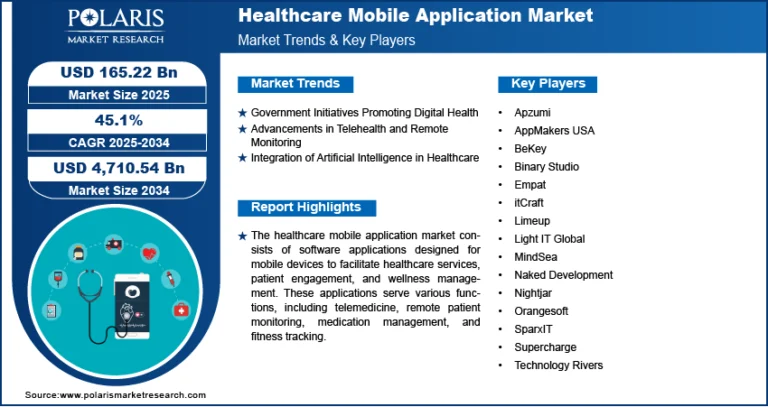Fiber Optic Components Market Projected to Reach USD 83.87 Billion by 2034, Growing at a CAGR of 9.7%
Global Fiber Optic Components Market size and share is currently valued at USD 33.35 billion in 2024 and is anticipated to generate an estimated revenue of USD 83.87 billion by 2034, according to the latest study by Polaris Market Research. Besides, the report notes that the market exhibits a robust 9.7% Compound Annual Growth Rate (CAGR) over the forecasted timeframe, 2025 – 2034
Market Definition
The fiber optic components market includes the essential hardware used in fiber optic communication systems, such as transceivers, amplifiers, splitters, connectors, and switches. These components enable the transmission of data via light through optical fibers, providing high-speed, long-distance, and interference-free communication. The market is driven by rapid digitalization, 5G rollout, cloud computing, and the growing demand for high-bandwidth internet. Data centers, telecommunications, military, and industrial automation sectors are key end-users. Continuous innovation in compact, energy-efficient components and wavelength division multiplexing (WDM) technologies enhances performance and network capacity. Emerging trends include photonic integration, AI-enabled optical networks, and increasing use of fiber optics in smart cities and IoT infrastructure. Asia-Pacific leads in manufacturing and deployment, with North America and Europe following in R&D and deployment. As data consumption continues to surge worldwide, the fiber optic components market remains critical to building next-generation communication infrastructure.
Key Report Highlights
- The report highlights the key region that accounts for the highest revenue share in the global Fiber Optic Components market.
- It identifies the leading country within this region that makes a significant contribution to the market’s overall performance.
- The report outlines the dominant segment that holds a major share of the market.
- It also emphasizes the fastest-growing segment projected to gain strong traction during the forecast period.
- Qualitative and quantitative market analysis have been used to provide an in-depth understanding of the market.
Market Overview: Key Figures at a Glance
- Market Value in 2024: USD 33.35 Billion
- Projected Market Size in 2034: USD 83.87 Billion
- Anticipated CAGR (2025-2034): 9.7%
Get access to the full report or request a complimentary sample for in-depth analysis:
Market Growth Drivers
The exponential growth in data consumption and the need for faster, more reliable communication networks are major drivers of the fiber optic components market. As the backbone of high-speed internet, 5G infrastructure, and data centers, fiber optics offer unmatched bandwidth, low latency, and long-distance transmission capabilities. The rising demand for cloud computing, streaming services, and IoT devices is pushing telecom and tech companies to invest heavily in fiber optic networks. Additionally, government initiatives to expand broadband access in underserved regions further accelerate infrastructure deployment. Technological advancements in transceivers, amplifiers, and multiplexers are improving network efficiency and reducing signal losses. The push toward smart cities, connected vehicles, and industrial automation also increases reliance on fiber-based communication. As enterprises and consumers alike demand faster and more secure data transfer, the need for high-performance fiber optic components continues to grow, positioning the market for robust expansion across multiple sectors.
Market Key Players
The competitive landscape features a mix of long-standing companies and emerging contenders. Leading players are actively pursuing R&D initiatives and strategic moves to strengthen their market position. Notable participants include
- Acacia Communications, Inc.
- Accelink Technologies
- Broadcom Inc.
- Coherent Corporation
- EMCORE Corporation
- Fiber Optic Communications, Inc.
- Fujitsu Optical Components
- Furukawa Electric
- Hexatronic
- Lumentum Holdings Inc.
- MWTechnologies
- Nokoxin Technology
- O-Net Technologies
- Smith’s Interconnect
- Sumitomo Electric Industries






